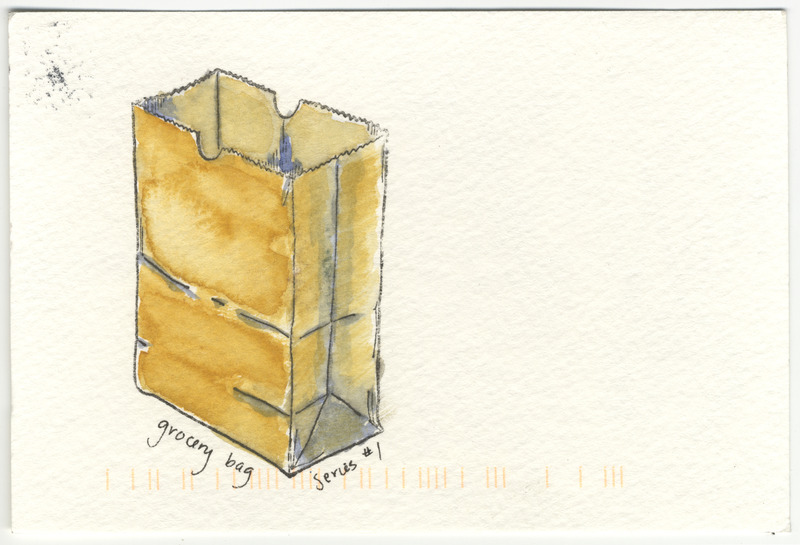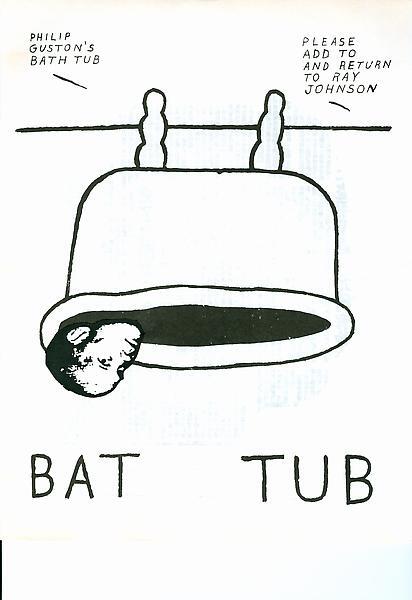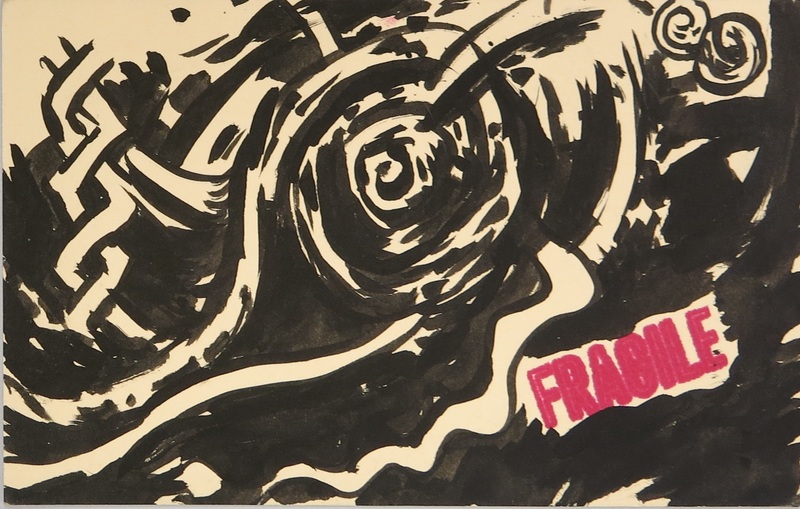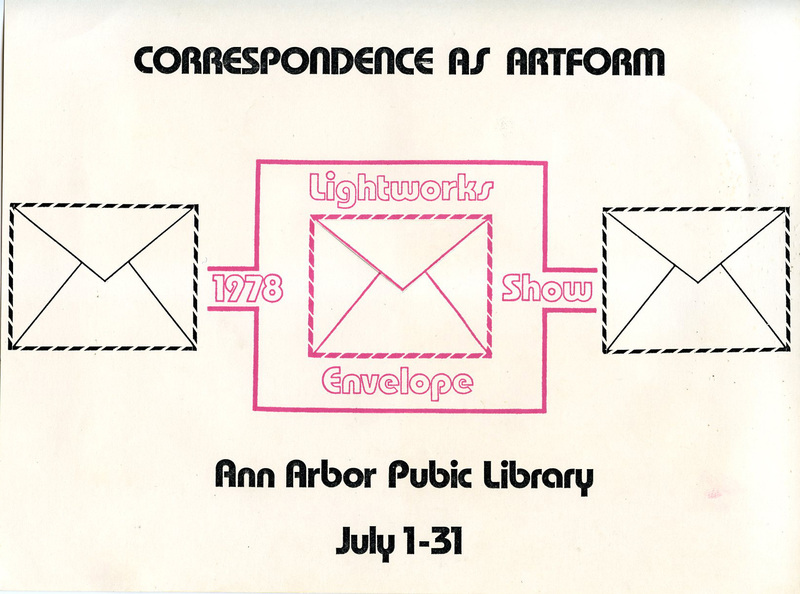Global and Local History of Mail Art
The concept of “mail art” was developed in the 1960s, particularly through the work of artist Ray Johnson and his contemporaries, who exchanged art with one another through the mail. These individuals and their activities were dubbed The New York School of Correspondence. Drawing on influences from Dadaism, Futurism, and other early modernisms, mail art was meant to exist outside the formal, classist institutions that rule the art world, like the museum or gallery. The beauty of mail art is the possibilities it opens up for anyone to share artistic work and engage in a creative dialogue with others. Ray Johnson’s artistic career developed while he was in New York City, though he was originally from Detroit and studied art at the Detroit Institute of Arts and the Ox-Bow School in Saugatuck, MI (Cordova, 2016).
Mail art is often playful: in Johnson’s piece, the artist has fun playing with words. The black and white, almost cartoonish drawing displays an upside-down bathtub with a photographed head of Johnson poking out of it. Beneath the image is written “Bat Tub.” The added text indicates that this is “Philip Guston’s Bath Tub,” Guston being a contemporary of Johnson’s.
There are further connections between Michigan and Ann Arbor to the practice of mail art. In 1969, Michiganians Ken and Ann Mikolowski founded Detroit’s Alternative Press (AP). In 1971, the AP created subscription-based art mailings, which often included art and poetry postcards by Detroit and Michigan-based artists, leading poets of the Beat and Black Mountain schools, and Ken and Ann themselves (“The Alternative Press,” n.d.).
A bright red “fragile” stamp, known as marking packages in the mail as delicate, stands out against black, amorphous shapes and swirls in this AP postcard, a collaboration between Ken Mikolowski and Detroit artist Gordon Newton. The dark hues and stroke marks are characteristic of features found in Newton’s paintings. There might be some poking at the double meaning of fragile here–used to advertise the delicacy of things traveling through the mail and the implied delicacy of a work of art. In this instance, the object is both.
During the 70s, another group of artists in Southeast Michigan developed their own dialogue with mail art. In 1978, Lightworks Magazine, created by artist Charlton Burch, presented the “envelope invitational” exhibit at the Ann Arbor District Library. Five hundred artists were mailed a postcard printed with an envelope image and invited to submit their own artistic interpretations on the postcard to mail back for inclusion in the exhibit (Burch, 1979).
In this flyer advertising the Lightworks Envelope Show, we see again a mail artist playing with words. The intentional misspelling on the flyer notes the exhibition’s location as the “Ann Arbor Pubic Library.”
Burch reached out to the librarians coordinating the call for mail art in 2020, which is how they became aware of the connection between Lightworks Magazine and mail art in Michigan. Burch also submitted several pieces to the libraries’ mail art call.
This postcard features a collage made of a circular cutout of men’s house slippers from a vintage catalog. Typed text across the shoe image states, “House slippers for George Manupelli from Third Story + September 2020.” Manupelli was an important figure in the artistic scene and culture of Ann Arbor. In 1963, he founded the Ann Arbor Film Festival, the oldest experimental film festival in North America. This is another example of artists using mail art to connect, collaborate, and refer to their community.

Call for Mail Art

Connection and Hope




